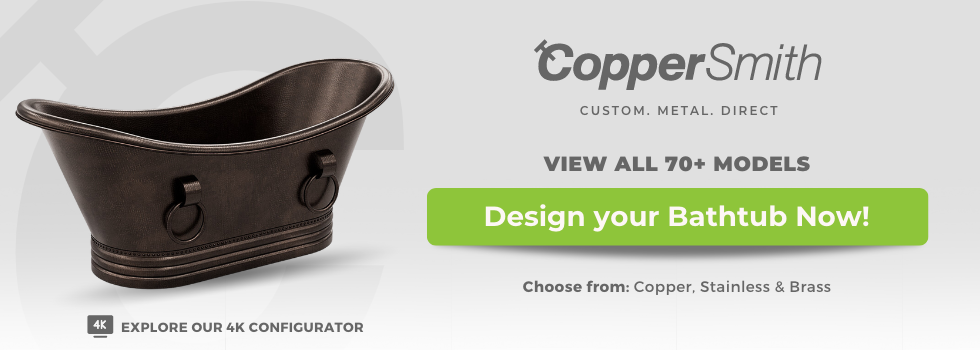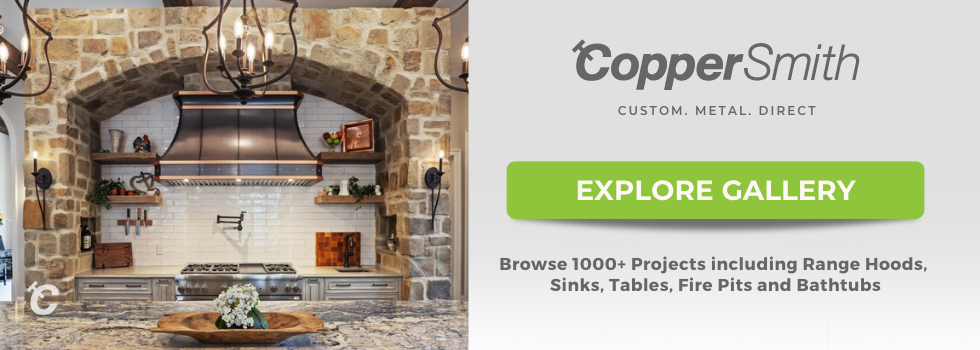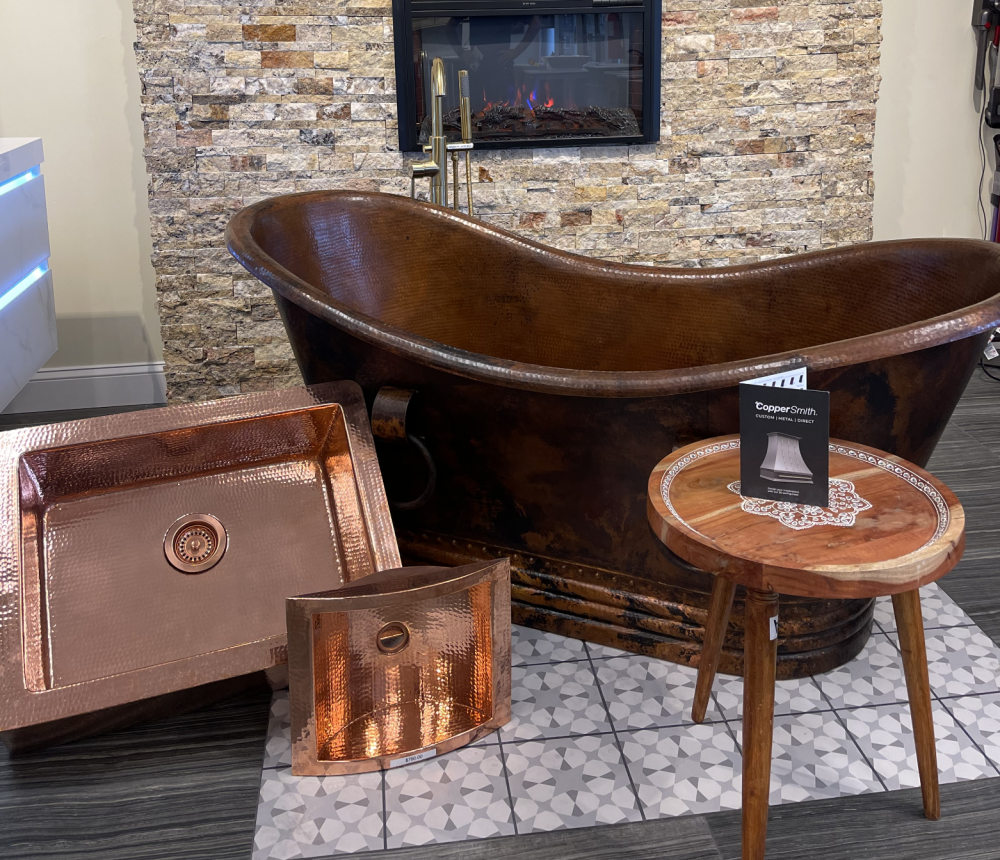Are you considering installing a freestanding tub in your home’s bathroom? This is a wise choice for many reasons. First, freestanding tubs are timeless. They’ve never gone out of style. By installing a freestanding tub in your bathroom, you can be confident your bathroom’s design makes the right impression on guests. (The presence of a freestanding tub can also make the right impression on potential buyers if you ever choose to sell your home. This is one of the many reasons freestanding tubs are smart financial investments.)
Additionally, a large soaking tub gives you a spot in your own bathroom in which you can relax on a daily basis. That said, it’s worth noting that freestanding copper bathtubs come in a range of shapes and sizes. You need to research your options to determine which will offer maximum comfort before choosing one for your home.
This guide will help. It covers some of the more popular freestanding tub designs you may encounter, describing the manner in which their shapes impact your comfort when bathing. That said, it’s important to keep in mind that your own personal taste will play a role in your final decision when you choose which tub to install in your home. This guide should merely help point you in the right direction.
Freestanding Tubs: Which Shapes Offer Maximum Comfort?
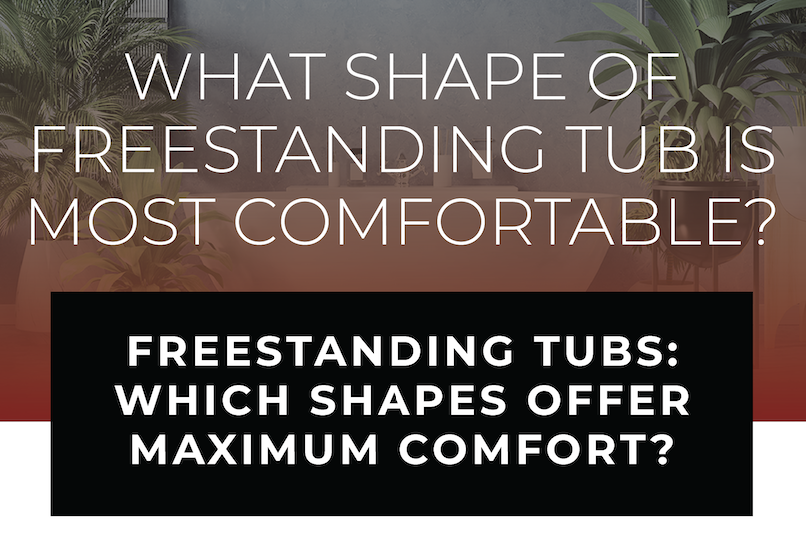
Oval bathtub
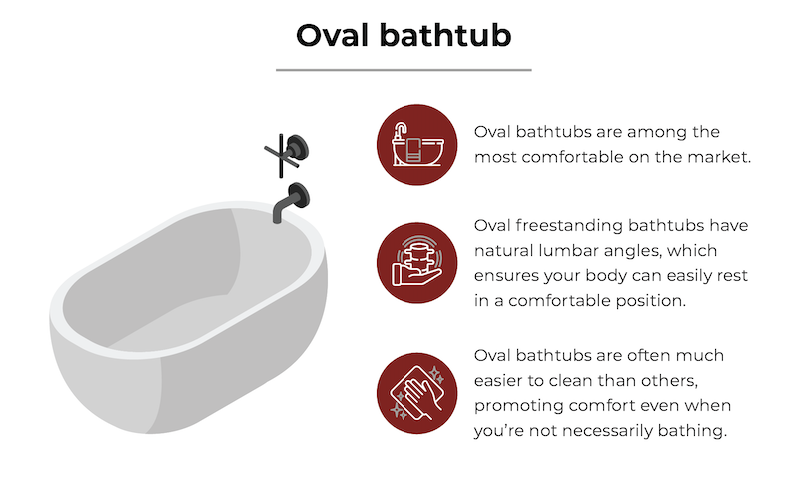
Oval bathtubs are among the most comfortable on the market for several reasons. For example, an oval freestanding bathtub has natural lumbar angles. This ensures your body can easily rest in a comfortable position when relaxing in your soaking tub. You should also consider the fact that you will need to clean your bathtub from time to time. Oval bathtubs are often much easier to clean than others, promoting comfort even when you’re not necessarily bathing.
Corner bathtubs
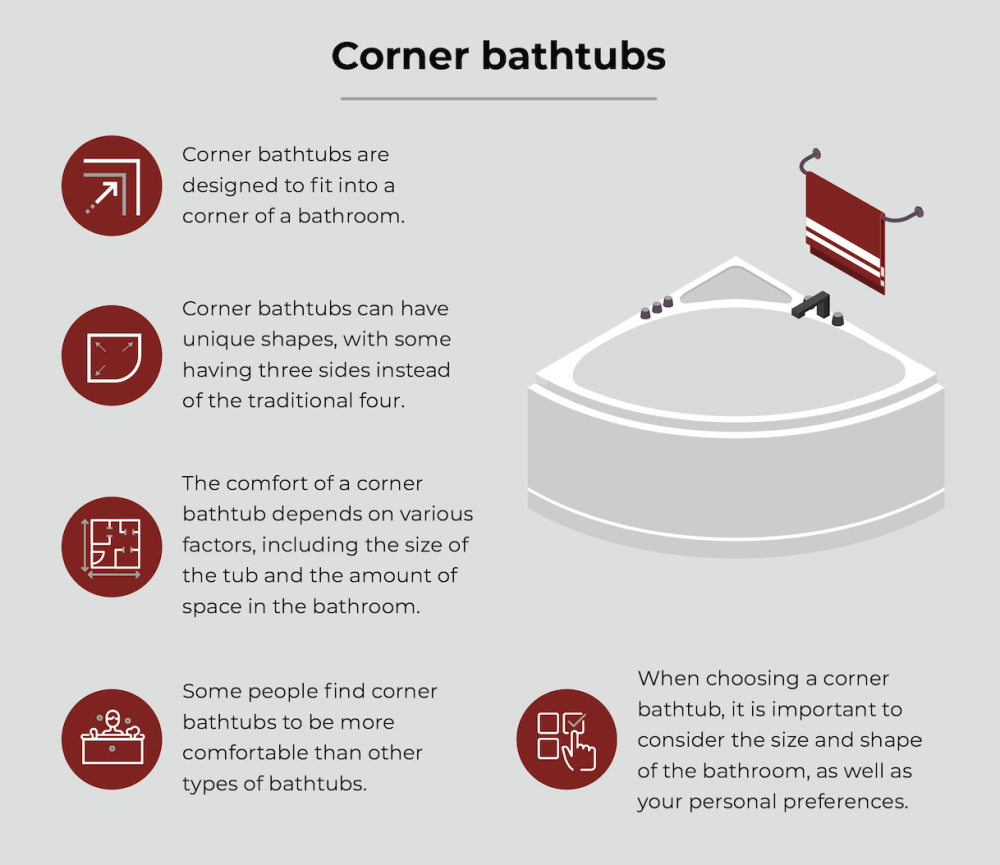
As the name implies, a corner bathtub is one that’s meant to be tucked into the corner of a bathroom. Corner bathtubs often have unique shapes, with some having three sides instead of the traditional four in order for the tub to fit into a corner.
Whether a corner bathtub is or isn’t comfortable depends on a variety of factors. For instance, depending on how much space you have to work with, a corner tub may not be wide in some sections, as it needs to narrow so that the tub can fit into the corner of your bathroom without taking up too much space.
That said, some people feel “cozier” when their bathing space is tucked into the corner of a bathroom. This is just one example of the way in which your personal taste can influence your choices when deciding what type of tub to purchase. It also highlights why you must often account for the nature, size, and shape of your overall bathroom space when deciding what types of freestanding bathtubs may be right for you.
Alcove tubs
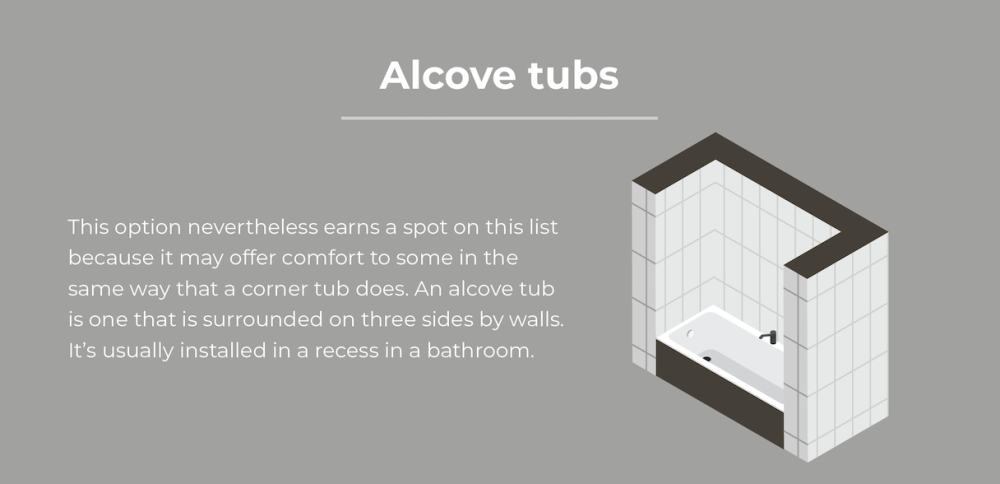
Alcove tubs can technically come in many different shapes. This option nevertheless earns a spot on this list because it may offer comfort to some in the same way that a corner tub does. An alcove tub is one that is surrounded on three sides by walls. It’s usually installed in a recess in a bathroom. For some, the feeling of being tucked in while lounging in a freestanding tub boosts their comfort.
Round bathtubs
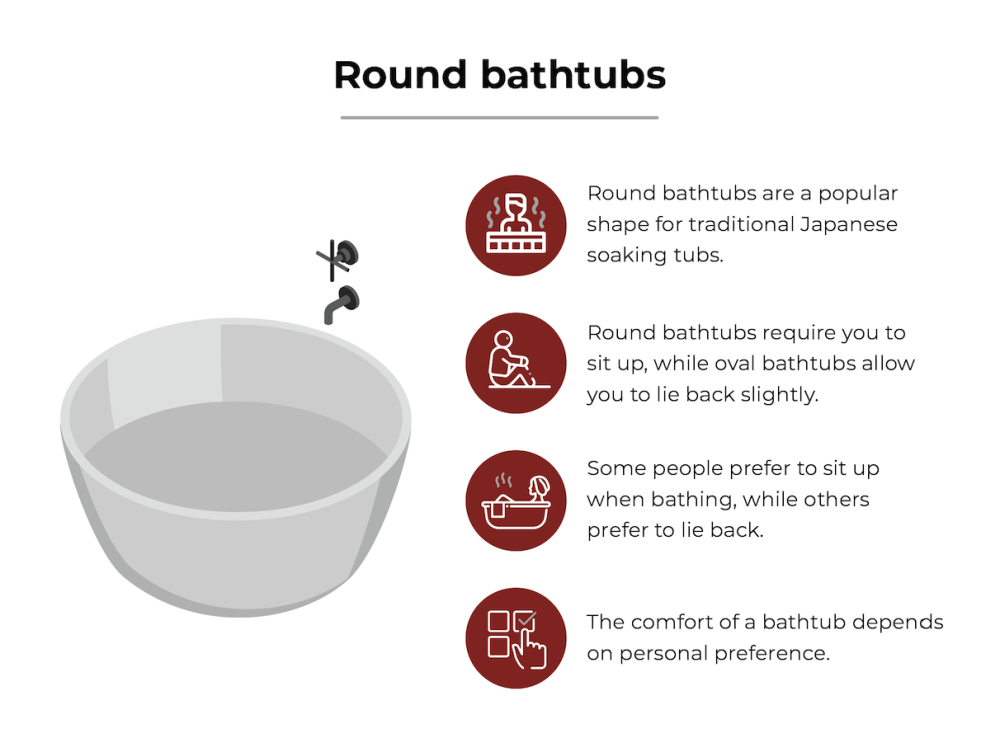
Round bathtubs have been popular for ages. This is a common shape for a traditional Japanese soaking tub. This tub style will affect exactly how you lounge in your bathroom space. While oval tubs allow you to lie back slightly, a round tub requires you to sit up.
This isn’t meant to suggest these tubs are inherently less comfortable than others. On the contrary, some homeowners actually prefer to sit up when bathing. Installing a round tub in your home (particularly if it’s one that retains heat well) is essentially like installing an outdoor hot tub indoors. Again, a comfortable bathtub for one person may be uncomfortable for someone else. You need to account for your tastes when deciding what constitutes a comfortable bath shape.
Square shape bathtubs
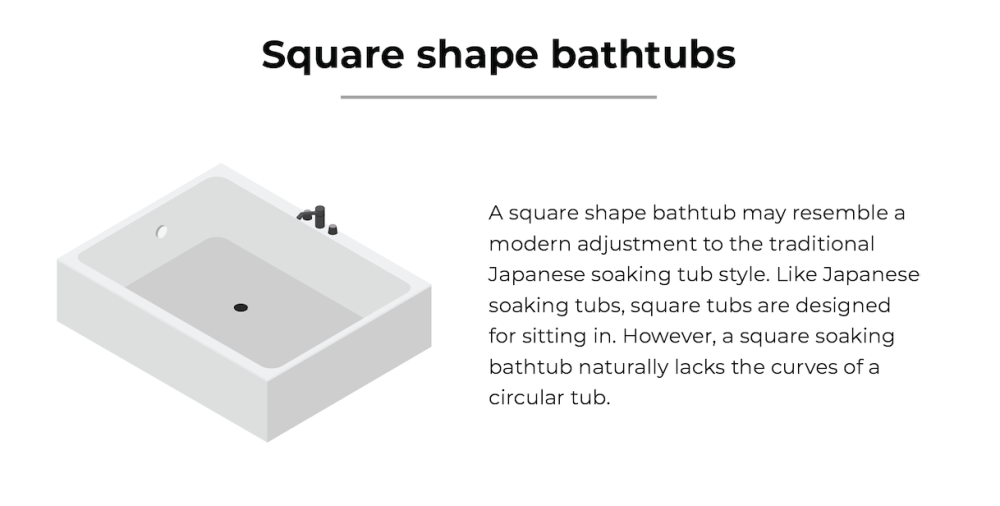
A square shape bathtub may resemble a modern adjustment to the traditional Japanese soaking tub style. Like Japanese soaking tubs, square tubs are designed for sitting in. However, a square soaking bathtub naturally lacks the curves of a circular tub.
This may appeal to some. If you’re comfortable sitting up in a circle tub, there’s no reason to think sitting in a square tub will have any adverse impact on your comfort. A square freestanding tub also might blend in more naturally with your bathroom’s current design aesthetic.
Hourglass shape bathtubs
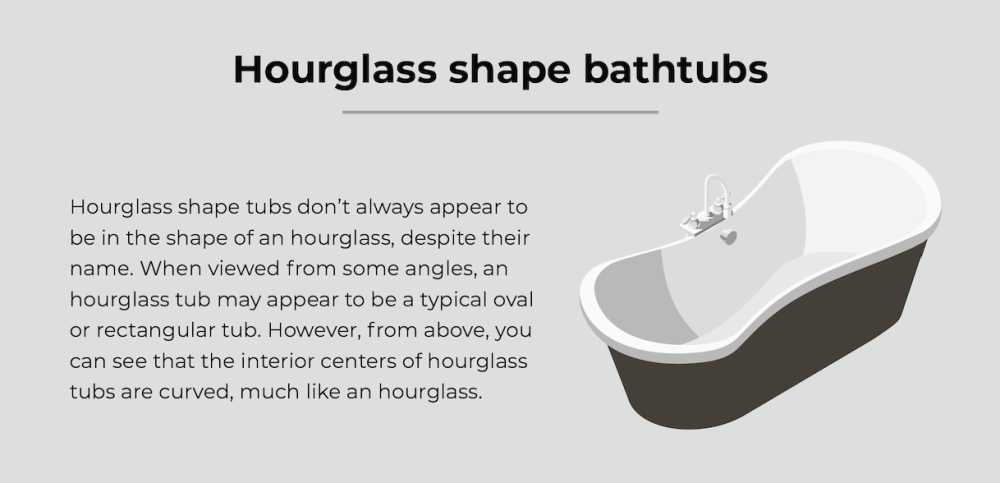
Hourglass shape tubs don’t always appear to be in the shape of an hourglass, despite their name. When viewed from some angles, an hourglass tub may appear to be a typical oval tub or rectangular shape tub. However, when viewed from above, you can see that the interior centers of hourglass tubs are curved, much like an hourglass.
Some find this design results in a more comfortable bathtub due to the way the interior contours support the body. Additionally, this type of comfortable bathtub often (but not always!) has space for armrests, which may be an important factor for you.
Best Copper Slipper Tubs
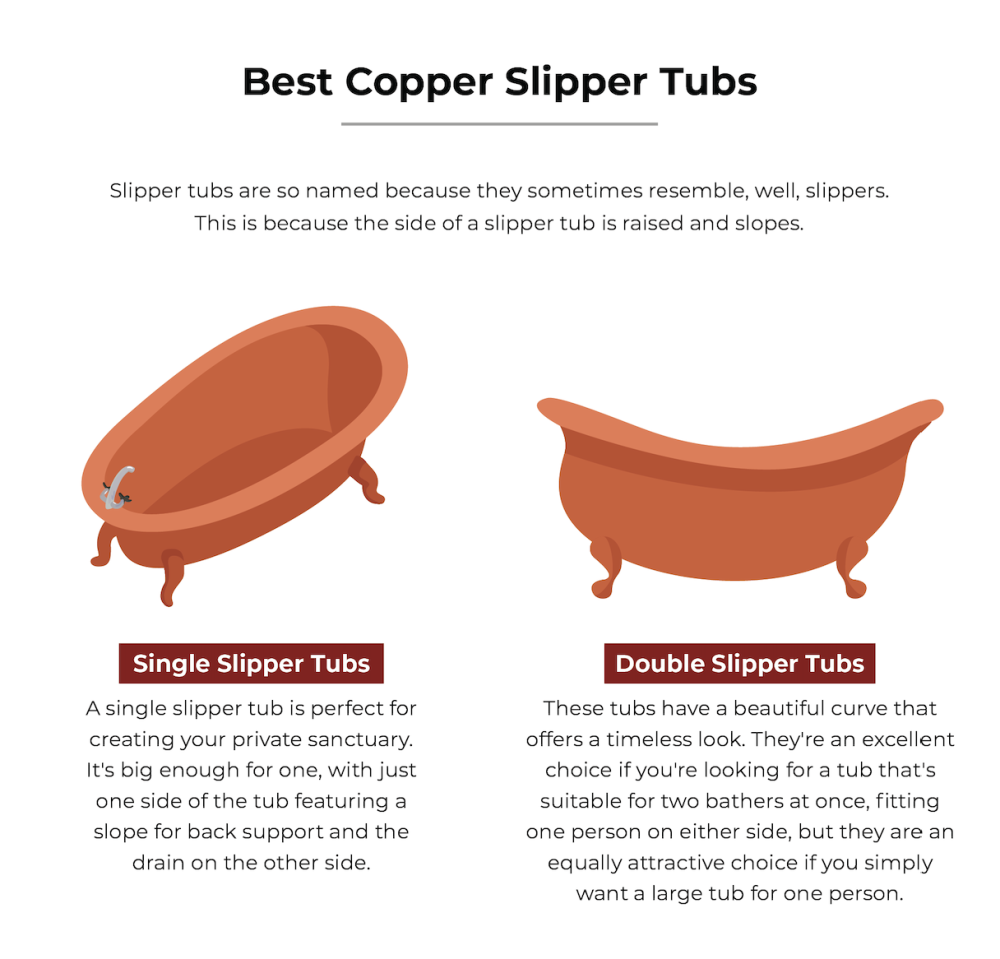
Slipper tubs are so named because they sometimes resemble, well, slippers. This is because the side of a slipper tub is raised and slopes. In a double slipper tub, two sides are raised and sloping. Some would also refer to this style as an angled tub. A single slipper tub boasts an ergonomic design that many consider to offer substantial comfort. A large double slipper tub is often perfect for two people, which may be precisely what you’re looking for.
Single Slipper Tubs
A single slipper tub is perfect if you're creating your own private sanctuary. It's big enough for one, with just one side of the tub featuring a slope for back support and the drain on the other side. If your bathroom is a little more limited in space, a single slipper tub could be a better option compared to a double slipper. It will save a little more space but still give you a luxurious and deep soak. The shape of this style of tub is attractive too, especially if you're looking for a modern style that will look at home in your contemporary bathroom.
If you want to make sure your freestanding tub fits your bathroom and delivers the look you want, use our 3D configurator and request a quote from our team. You will receive a 3D rendering of your tub to see how it can be customized and consider whether it's a good fit for your bathroom.
Double Slipper Tubs
To expand on double slipper tubs, these tubs have a beautiful curve that offers a timeless look. They're an excellent choice if you're looking for a tub that's suitable for two bathers at once, fitting one person on either side, but they are an equally attractive choice if you simply want a large tub for one person. They offer support for the head, neck, and back with their ergonomic slopes. Whether you're looking for a contemporary tub or something more traditional, a double slipper tub can work for you.

Bathtub Materials
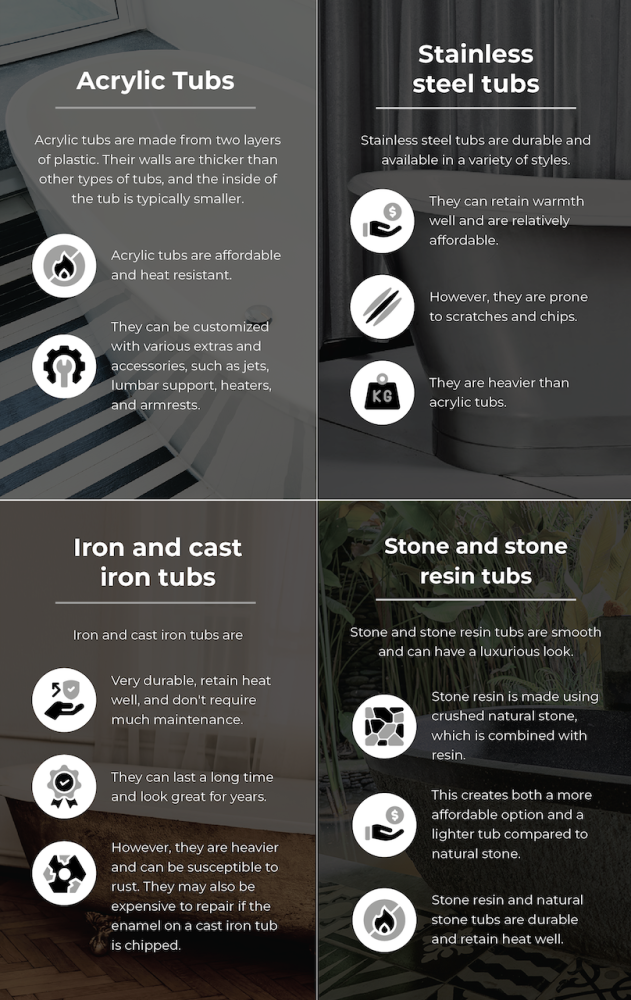
Acrylic Tubs
Acrylic tubs are made from two layers of plastic, which means their walls are thicker and the inside of the tub is typically smaller. However, acrylic tubs do have other benefits, including being affordable and heat resistant. They also offer the option of adding a variety of extras and accessories, such as jets, lumbar support, heaters, and armrests.
Stainless Steel Tubs
Stainless steel baths are a durable option available in a variety of styles. They can retain warmth well and there are affordable options to consider. However, enameled steel tubs are prone to scratches and chips. They are also heavier than acrylic tubs if you're comparing affordable options.
Iron and Cast Iron Tubs
Iron is another popular metal for freestanding bathtubs. Iron and cast iron tubs are very durable, retain heat, and generally don't require much maintenance. These tubs can last a long time and look great for years. As for the downsides, these tubs are heavier and can also be susceptible to rust. They may also be expensive to repair if the enamel on a cast iron tub is chipped.
Stone and Stone Resin Tubs
The appeal of natural stone can be a draw for some people when choosing a freestanding bath. They're smooth to the touch and can have a luxurious look. Stone resin is made using crushed natural stone, which is combined with resin. This creates both a more affordable option and a lighter tub compared to natural stone. Stone resin is durable and retains heat, like several other materials. However, stone resin tubs can be a little more difficult to install compared to other options. Natural stone can also have some downsides, such as a lack of recyclability and a heavier weight.
Freestanding Bathtub Measurements
Understanding some typical measurements for freestanding bathtubs can be helpful. It's important to think about how and where a freestanding tub will fit into your bathroom or wherever you might intend to put it (such as outdoors). The typical length of a freestanding tub can range from 48" to 72", while the width will start at about 30". Of course, the size will be affected by the shape of the tub too. A round tub will typically be taller and wider so that it can provide the space to bathe sitting up. Whereas, an oval or rectangular tub gives you more space to stretch out and doesn't need to be as tall. They are typically about as tall as they are wide.
When you customize your CopperSmith bathtub, you can choose a size that works for your needs. With a wide range to choose from, you're able to choose the perfect size to match the comfort you're looking for. When looking at sizes, you can also take into account the slope of the tub and the comfort and support it offers you. The slope will affect the interior space and comfort.
Use our 3D render service to get an impression of what your tub will look like, along with a quote and any advice you may need.
Bath Shapes and Your Comfort: Additional Factors to Consider
When researching bath shapes for your new tub, it’s worth keeping in mind that shape isn’t the only factor which will impact how comfortable a tub may be. Other factors to account for when browsing your options include the following:
Copper Bathtub Heat retention
Although some people enjoy the invigorating feeling they get when stepping into a cold bath, most people relaxing in a bath want the water to stay warm for the duration of the bathing experience. If you’re such a person, when deciding what would be a comfortable tub for your home, remember that the bathtub material from which the tub is made will affect the degree to which it will retain heat.
For example, copper freestanding tubs are often popular because copper is a strong heat conductor but not a strong heat radiator. As such, copper heats up relatively quickly when you add hot water to it, and it retains heat, allowing you to relax in a warm soak for longer than you might in another type of bathtub.
That’s just one example. If heat retention is a quality you’re looking for in comfortable bathtubs, ask an expert to describe how different materials impact a tub’s ability to retain heat for long periods of time. Other types of tubs you might want to learn more about include:
- Acrylic bathtubs
- Stainless steel tubs
- Iron tubs
- Cast iron tubs
- Stone resin tubs
Can you fit a copper bathtub in your space?
All homeowners know they need to consider how much space they have to work with when buying and installing new freestanding bathtubs. A beautiful tub in a large master bathroom may not make the best impression in a smaller bathroom where it takes up too much space.
Perhaps more importantly, the amount of space your freestanding tub takes up will affect your comfort when you clean the tub. If you need to squeeze into tight corners and otherwise contort your body into painful positions when cleaning, a theoretically comfortable bathtub could actually have a negative impact on your comfort.
Research has shown that people can actually feel physically uncomfortable when they look at something unattractive. Consider this when choosing your new freestanding tub. If the shape of your freestanding tub is pleasing to the eye, you may be surprised by the extent to which this quality affects your comfort during an actual bath.
Comfortable Freestanding Tubs: Options to Consider
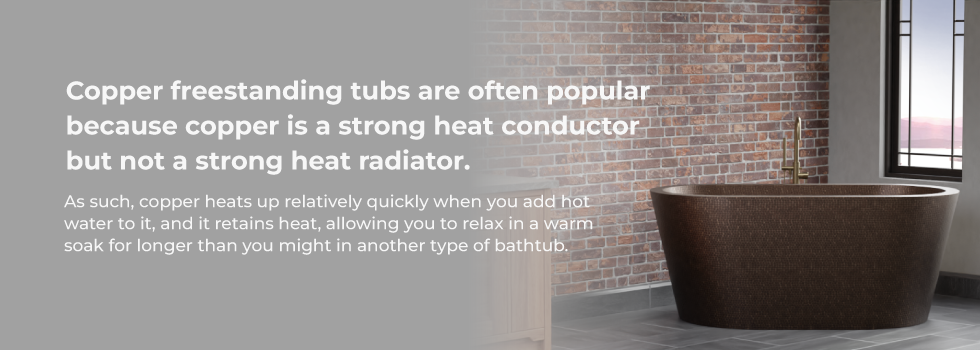
There’s no single answer to the question “What are the most comfortable freestanding tubs?” That’s among the most critical points you should take away from this guide. The right freestanding bathtub for you is simply the one that most aligns with your tastes.
Hopefully, the information here has simply helped you familiarize yourself with the different types of freestanding soaking tubs that are currently available. By accounting for such factors as bathtub shapes, bathtub material, and the size of your bathroom space, you’ll be more likely to choose a freestanding tub that’s ideal for your home. As always, you can discuss this topic in greater detail with an expert at CopperSmith if you have questions. Your tub design plays a crucial role just like a kitchen center piece, that being range hoods.


